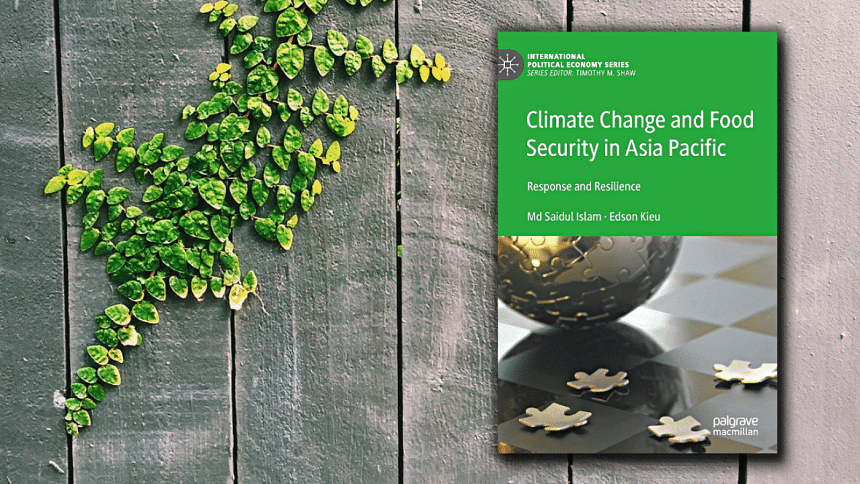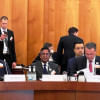How can we tackle climate change and food shortage in Asia?

Climate change and food security issues are multifaceted and transcend national boundaries. Therefore, regional organisations are optimally positioned to address them while actively engaging global partners to slow down or reverse current trajectories. Using tools such as a robust content analysis and institutional ethnography, Md Saidul Islam and Edson Kieu, in their book Climate Change and Food Security in Asia Pacific: Response and Resilience (Palgrave Macmillan, 2021) make a sociological survey across three regional organisations—the Association of Southeast Asian Nations (ASEAN), the Pacific Islands Forum (PIF), and the South Asian Association for Regional Cooperation (SAARC). They investigate the multifaceted obstacles that impede regional organisations' ability to effectively cope with these problems.
The authors have qualitatively reviewed the efficacy of policies and examined the connections between politico-economic processes that affect the development, cooperation, and execution of regional policies. In doing so, they have reviewed regional policies using five key criteria: planning, implementation, cooperation, legal obligation, and international contribution. Their findings suggest that regional organisations face fundamental problems in the implementation of extensive policies due to the lack of cooperation and legal obligation between member nation-states; this stems from fundamental prioritisation of national development agendas over regional cooperation.
According to the book, the world population now stands at 7.8 billion, and one in seven of these people are already hungry. The world population is expected to reach 9 billion by 2050. What does that mean for food security and hunger?
According to the United Nations Food and Agriculture Organization, most of these people in hunger are, unfortunately, found in Asia, with about a billion living on less than $1.25 per day.
The book argues that, despite Asia's unprecedented economic growth and advances in science and technology, there has been an increase in poverty and stagnation in average crop yields. It is clear from the regional impacts of the 2008 food crisis that the central dilemma for Asia is the problem of food security because of certain destabilising factors, such as competition for land, rural-urban migration, rapid urbanisation, population growth, climate change, and the increasing shortages of energy and water.
To feed its growing population, Asia may need to raise productivity by 70 percent by 2050. However, the impacts of climate change on the four dimensions of food security—availability, physical and economic access, and utilisation—are also linked to other factors influencing changing climate; scientific findings have shown that rising temperatures increasingly impact food crops. It is projected that, based on a scenario of an increase of 2 degrees Celsius, without considering changes in rainfall patterns, production of major food crops will decline.
After a rigorous background and critical conceptual nexus between climate change and food security in the first two chapters, the authors have meticulously examined the initiatives of ASEAN, SAARC, and PIF regarding climate change and food security in the subsequent three chapters. Climate change pushes national and regional actors to embark upon numerous initiatives. As these initiatives are often driven not by a genuine intention to protect the environment, ensure food security, and address the needs of the poor, but by protecting a "green façade" and finding economic opportunities alone, the chances of success through such initiatives are slim. Though there are prospects for regional cooperation and opportunities, competing and conflicting interests on power and resources further fragment the region.
Chapters 6 and 8 focus entirely on India and China, elucidating not only their comprehensive policy apparatuses regarding climate change and food security but also their land and water grabs across Asia and Africa. The remaining chapters are largely the solutions offered to combat the climate change and food security problems of the Asia-pacific region, which focus on, for example, urban food security, food sovereignty movements, and sustainable food systems in Asia.
What becomes apparent is that economic growth is necessary but not sufficient to tackle climate change as well as accelerate reduction of hunger and malnutrition. It has to come with robust public policies accompanied by consultations with the poor and disadvantaged. Food security can be sufficiently solved by higher income and trade, with distribution and equality improvements.
Taken together, this book is a crucial read—empirically rich, theoretically sophisticated, and analytically rigorous.
Dr Mahmudur Rahman (PhD, University of Malaya), a registered Graduate Engineer certified by the Board of Engineers Malaysia, is working on climate solutions such as vibration and control aspects of wind turbines. Email: [email protected]

 For all latest news, follow The Daily Star's Google News channel.
For all latest news, follow The Daily Star's Google News channel. 








Comments